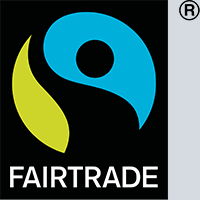Coffee Buying Guide
We're going to take a deep dive into coffee terms today, specifically ones relating to the beans themselves. This guide should give you a better translation of all these advanced coffee terms we use. We'll start basic and get more complicated; feel free to check out anytime!



Arabica or Robusta?
These are terms for the coffee beans' proper name. 70% of the world's coffee production is coffea arabica. Robusta, or coffea canephora, makes up less of the market but is still used in some countries, Italy, in particular. Robusta tends to have more caffeine and grows at lower altitudes in warmer climates. Almost all specialty coffee is arabica.
Roast Level
This is how long the coffee is roasted. Generally speaking, lighter roasted coffees will have a brighter flavor, with more acidity. Darker roasted coffees will have more toasted or bitter notes.
Tasting Notes
These are some of the flavors that the roaster tasted in the coffee when they cupped it! These can be a little hard to pick out, but just like tasting wine, it takes practice. Guide on tasting coffee incoming!
Origin
Which country the green beans originated! Single-origin means all of the beans came from one country, and they're typically more expensive to source. A blend or multi-origin is sourced from two or more different countries. It's important to note that even if coffee is labeled "single-origin," it could be a blend of different regions or farms.
Region
Similar to origin, but this typically refers to a farm or province in a country. For example, Huehuetenango is a municipal region in western Guatemala. These specifications can get extremely specific, even going as far as to tell you the farm from where your coffee came. It's part of a more significant industry movement to offer more transparency about the coffee process.
Cultivar/Varietal
This is the scientific name of the bean. For example, under the coffea arabica family, there is the bourbon varietal. Different bean varieties will have different flavors!

Certifications
Direct Trade
Direct trade, which means the coffee roaster has traded directly with the coffee farmer. This is more of a promise than certification, and as such is not internationally regulated and has no standard Certification though you may see the version shown.

Fair Trade
Fair Trade International is an organization to encourage environmental sustainability and proper compensation for producers. The Fair Trade Certification means the producers were paid at least $1.40USD per pound (Fairtrade price at the time of writing), provided the farm meets specific standards as laid out by the organization. It's worth mentioning there are three different fair trade companies, as some split off. Fair Trade International is the original.

Organic
We're specifically talking about the Canadian Organic Certification, as other countries may have different standards. Simply speaking, an organic coffee must contain at least 95% organic content. There are also extensive standards on how certain crops are grown. It's worth noting, Canada does accept the U.S. Organic Certification and vice versa, they are similar, but with some slight differences, so best to check on them individually.

Carbon/Climate Neutral
The carbon neutral certification means that from planting a tree to an empty coffee bag, the entire process has had a "net zero emissions" effect on the environment. The company could also purchase carbon tokens to offset their emissions. This type of certification should to be verified by an unbiased third party. There is no international standard for this certification, so Certifications will vary.

Rain Forest Alliance
This non-profit out of New York focuses on the farm itself and has little to say about coffee's actual trading. Generally, it's goal is to preserve the habitat and ecosystem around the coffee plantations. It also doesn't prohibit pesticides. Of note, the Rainforest Alliance certification can be obtained if a minimum of 30% is grown to match criteria, so it's worth asking what percentage is rainforest certified if you're interested.
Process
This refers to how the coffee cherries get treated after picking. There are three major ones. Natural or dry, wet or washed, and honey process sometimes called fully washed.
The natural process can highlight extremely flavourful coffees. It does this by letting the coffee bean dry in the cherry before being husked, thus the bean absorbs some of the flavors of the fruit. It's the most eco-friendly way to process coffee.
The washed process can enhance bean characteristics. It pulps the coffee cherries and ferments them to remove the mucilage before being dried. Since there is no additional flavor coming from the cherry, this puts extreme emphasis on the bean flavor itself.
The honey process can add some lovely sugar notes to the coffee bean. No honey is involved, but the bean will be separated from its cherry, and dried with the layer of mucilage. That mucilage allows it to continue absorbing moisture as it dries. Honey Process is an in-between for washed and natural process, mellowing out harsh flavors and adding sweetness.



